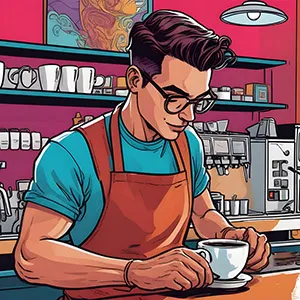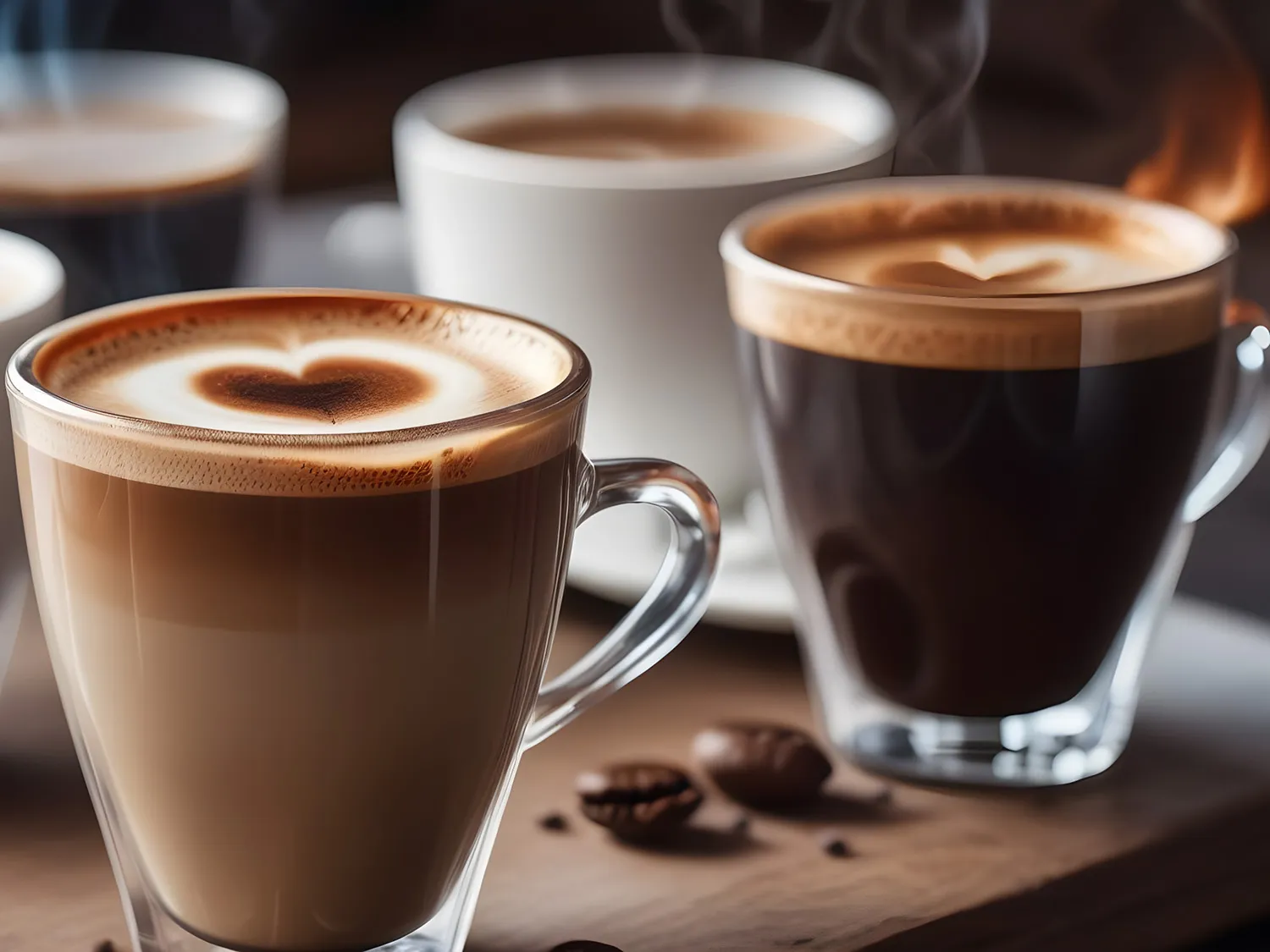
Types of Espresso Drinks
Espresso drinks and the different ways people make espresso are more popular worldwide than ever before.
Still, the many options and terms can be puzzling.
To help you understand better, let’s explore some popular ways people make coffee around the world. We’ll use simple explanations and include pictures to make it even clearer.
THE 4 BASIC ESPRESSO DRINKS
1. Espresso
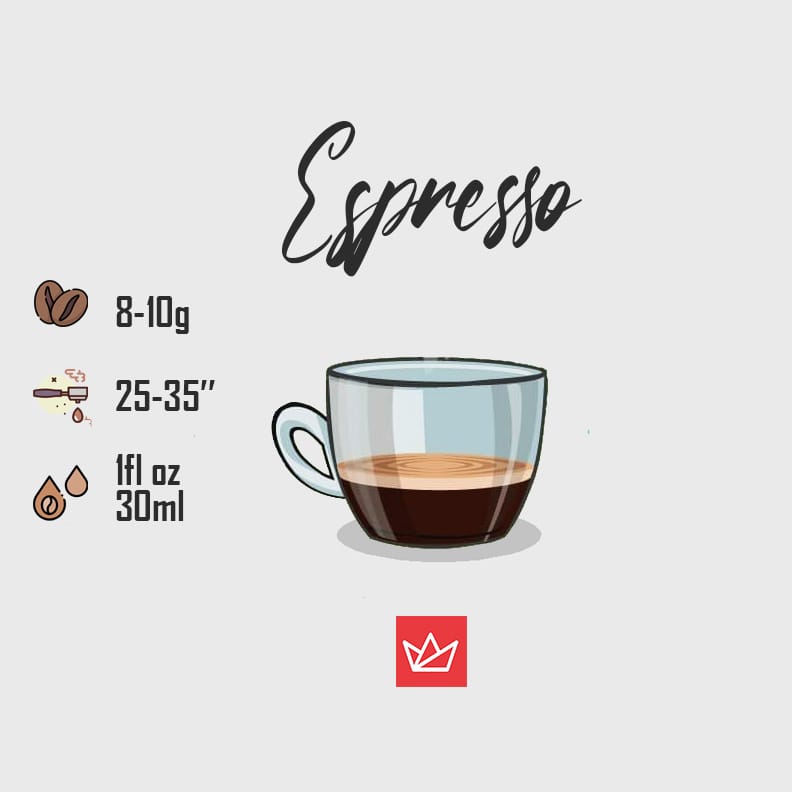
Espresso serves as the foundation for all the variations below, and while it may seem simple, perfecting its preparation consistently can be challenging.
A typical rule for crafting it with an espresso machine, which varies based on the coffee you choose, is as follows:
Hot water (90°C) is pressurized at 9 bars, passing through 8-10 grams of finely ground coffee to produce a 30ml shot of espresso. The extraction time is approximately 25 seconds.
2. Doppio Espresso
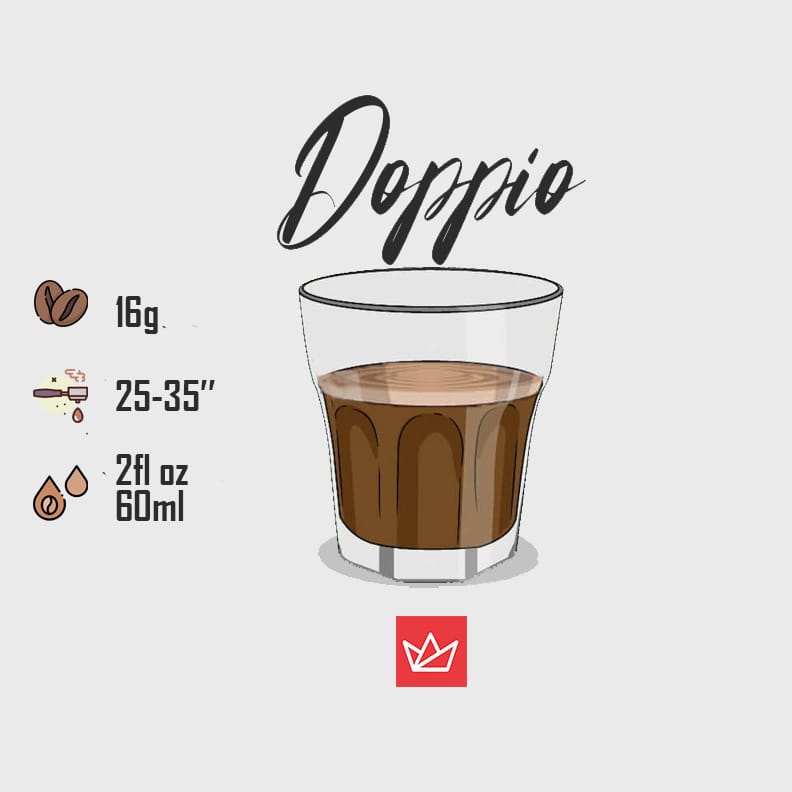
“Doppio” in Italian translates to “double” in English.
This term refers to a double espresso, where a dose of finely ground coffee ranging from 16 to 20 grams is used to prepare a 60ml cup of coffee.
The double espresso is a common choice in many countries and forms the basis for various espresso preparations.
3. Ristretto Espresso
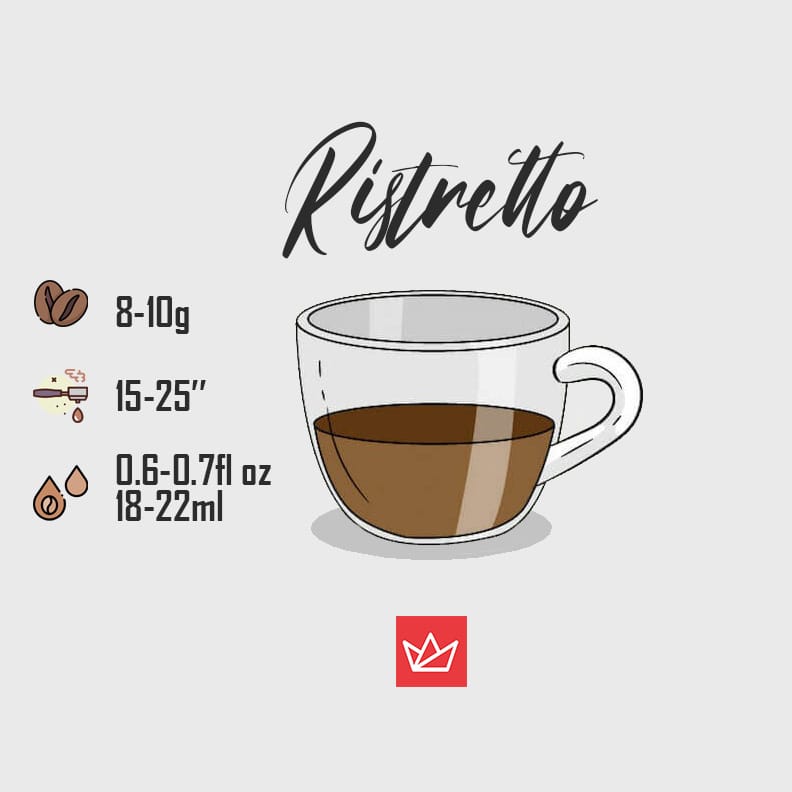
“Ristretto” in Italian means restricted.
It’s a smaller espresso. The coffee quantity is exactly the same as in a regular espresso (8-10g), but the extraction time is shorter (about 20 seconds).
Consequently, the final volume of the beverage is even smaller than that of a regular espresso. The result is 18-22ml of intense, dark coffee with less caffeine.
4. Lungo Espresso
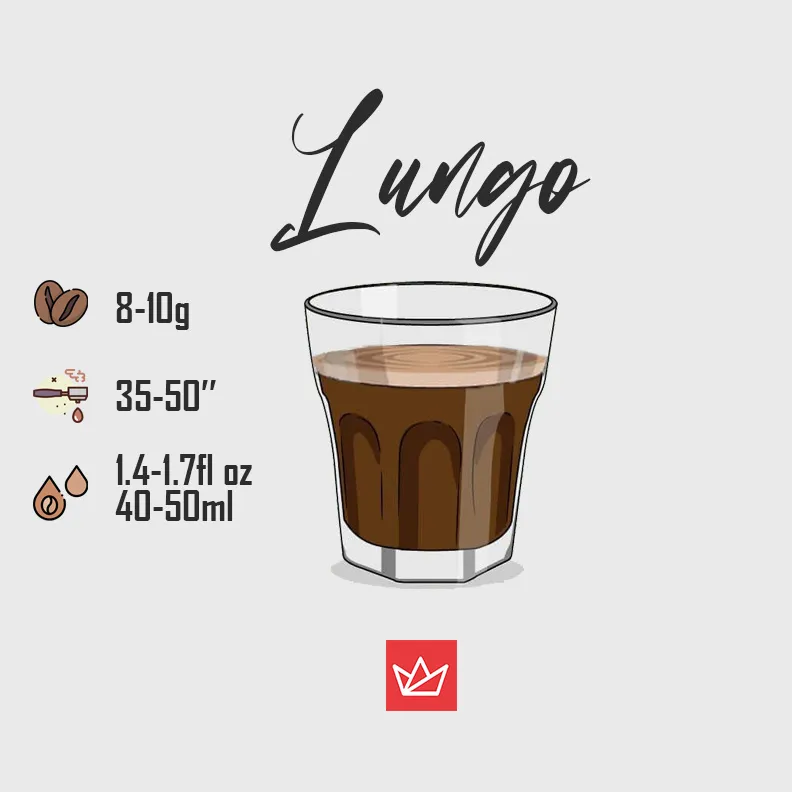
“Lungo” in Italian means long.
It is the opposite of ristretto. The longer extraction time (35-50 seconds) results in a more diluted and milder coffee with higher caffeine content.
Typically, the volume is around 40ml-50ml of coffee.
BLACK ESPRESSO
5. Freddo Espresso
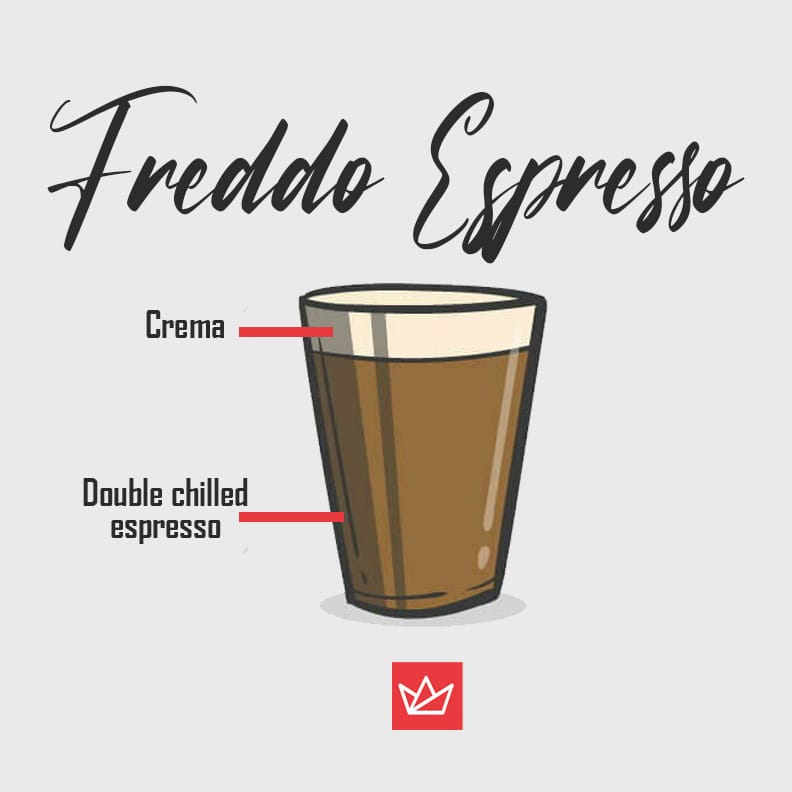
“Freddo” in Italian translates to cold.
This coffee is widely loved in Greece, and it’s my personal favorite (yes, I’m Greek). Here’s how you make it:
Start with a double espresso, add an equal amount of ice (60ml of ice for 60ml of espresso), sweeten with sugar if you like, and give it a good stir. Finish with 2-3 ice cubes to keep it cold. Enjoy!
6. Americano
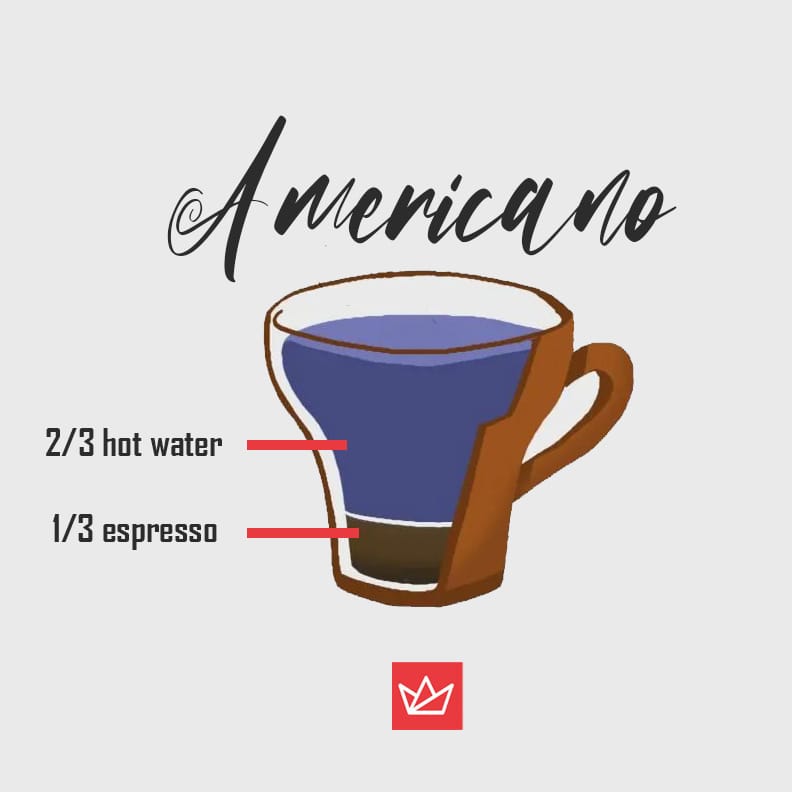
The Americano is simply Italian for “American Coffee.”
A 60ml double espresso with 120ml of hot water, typically follows the classic coffee-to-water ratio of 2:1. In contrast to a long black, where hot water is poured over the espresso, the Americano breaks the crema and blends it into the coffee.
Essentially, an Americano is a milder version of a long black due to its higher water content.
7. Iced Americano
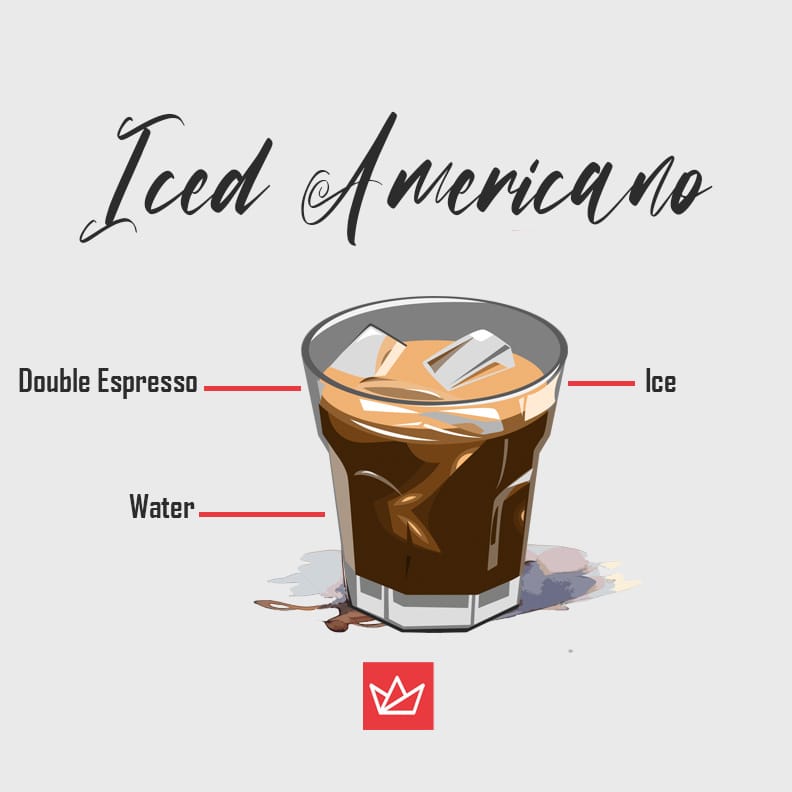
For an Iced Americano, start with a double espresso and pour it over half a cup of ice.
Swirl the mixture and take a moment to savor the taste. If desired, you can dilute it with a bit of cold water—begin with a very small amount and adjust to your preference.
However, I prefer it without dilution, allowing the ice to gradually temper the drink as it melts.
8. Long Black
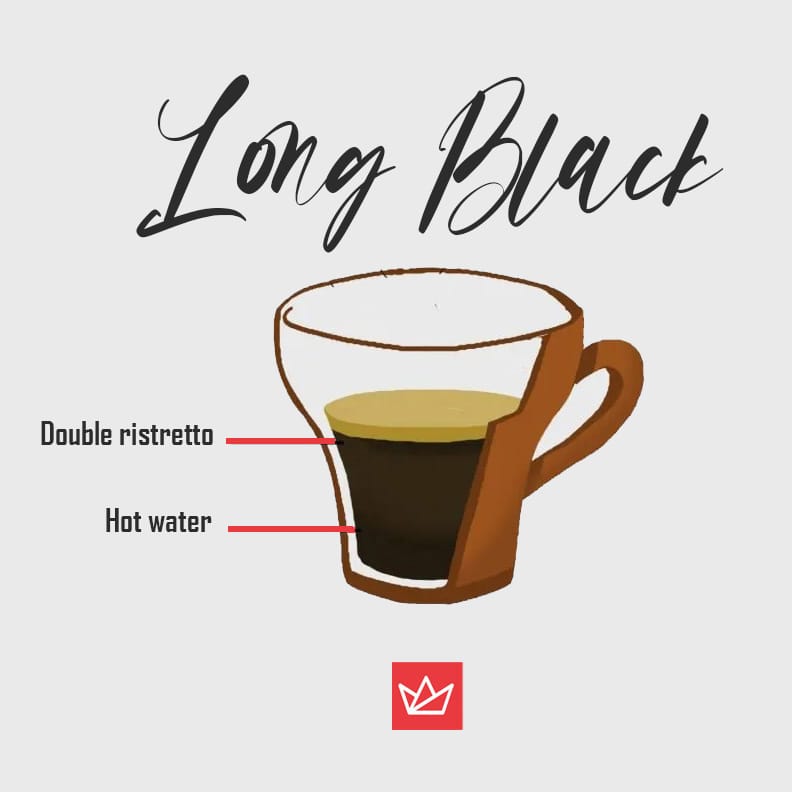
The classic version goes like this: Two shots of ristretto in a cup with a bit of hot water.
The hot water should go in first, and then the espresso on top. This preserves the crema and gives it a nice golden finish on the top of the coffee. Many people enjoy it with a splash of milk.
The water-to-coffee ratio depends on your preference, starting from 1:1 and can change depending on how strong or weak you want your coffee.
9. Romano Espresso
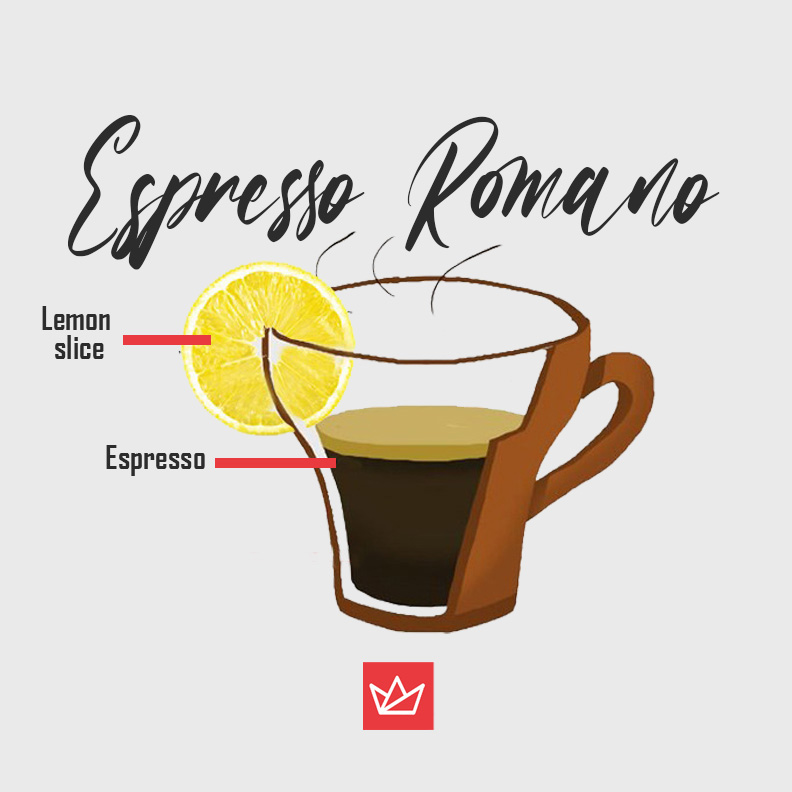
“Romano” means Roman and denotes a connection to Rome, but in reality, it’s an American-style coffee that originates from the USA.
Start with a single or double espresso shot, and enhance it by either adding a few drops of lemon or placing a slice directly into the coffee.
Be mindful of the quantity of lemon, as its flavor should complement rather than overpower that of the coffee.
ESPRESSO WITH MILK
10. Freddo Cappuccino
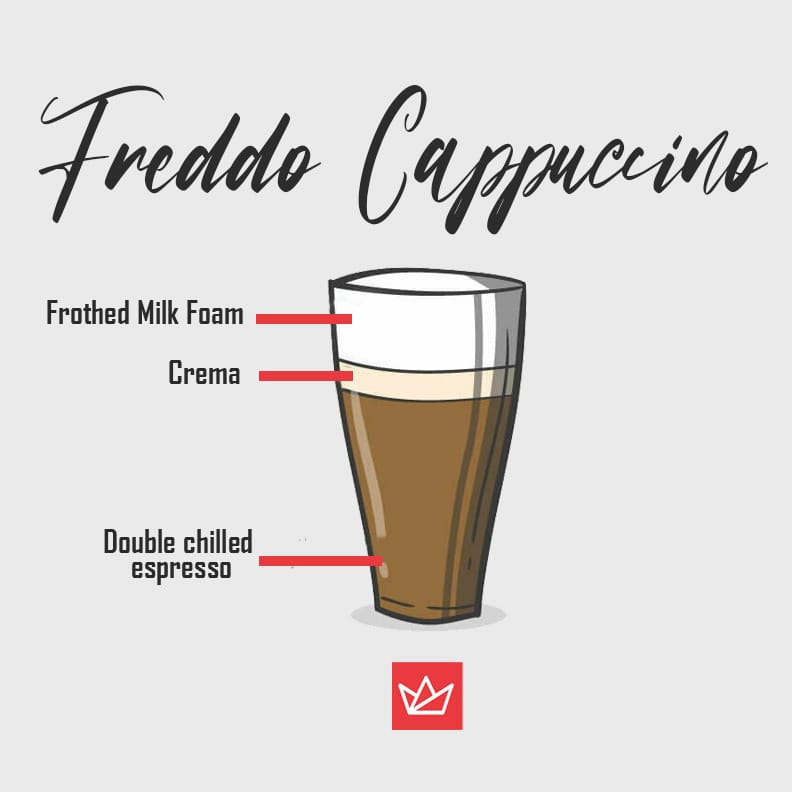
Similar to Freddo Espresso, this coffee originates in Greece. To make it, start with a double espresso. If the quantity seems lacking, increase ice rather than espresso.
Optionally, blend sugar with espresso, avoiding ice to allow quick dissolution. Introduce 2-3 ice cubes to the shaker, preserving temperature balance. To make the foam, froth low-fat milk without ice and shake it with a blender until you see a dense foam.
A telltale sign of success is the formation of three distinct layers, so serve over ice and enjoy!
11. Cappuccino
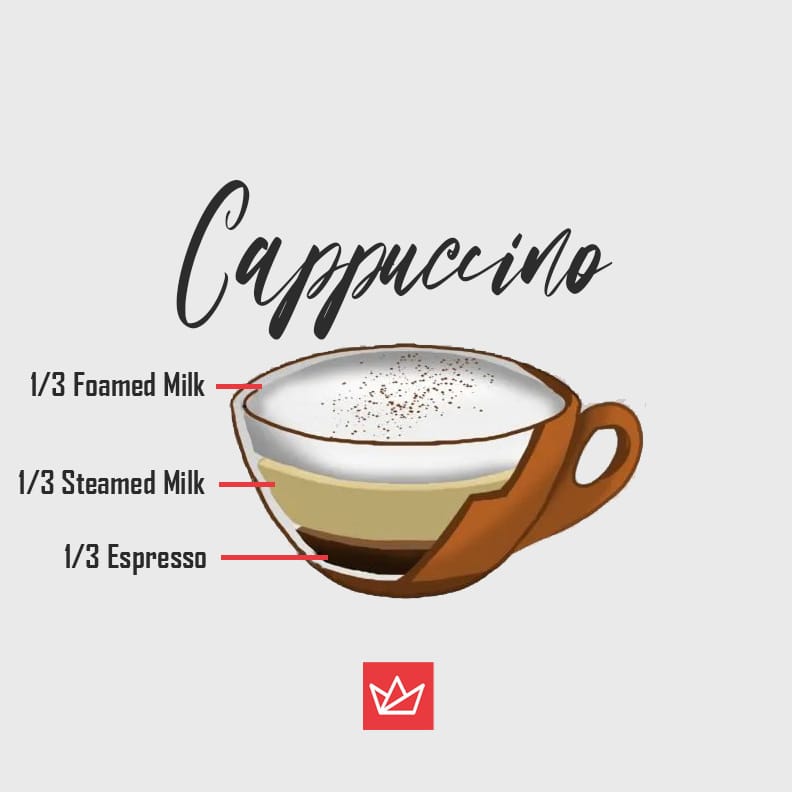
Cappuccino, an enduring symbol of Italian coffee culture. Start with a single or double shot of espresso. Heat and froth whole milk until achieving a velvety texture, proportioning aproximately one-third of the cup.
Pour the steamed milk over the espresso, allowing for a seamless blend. The finishing touch involves delicately layering foam on top, resulting in a distinct separation of the cappuccino into three equal parts.
Enjoy the well-balanced combination of espresso, steamed milk, and foam, each contributing to the overall flavor profile.
12. Dry Cappuccino
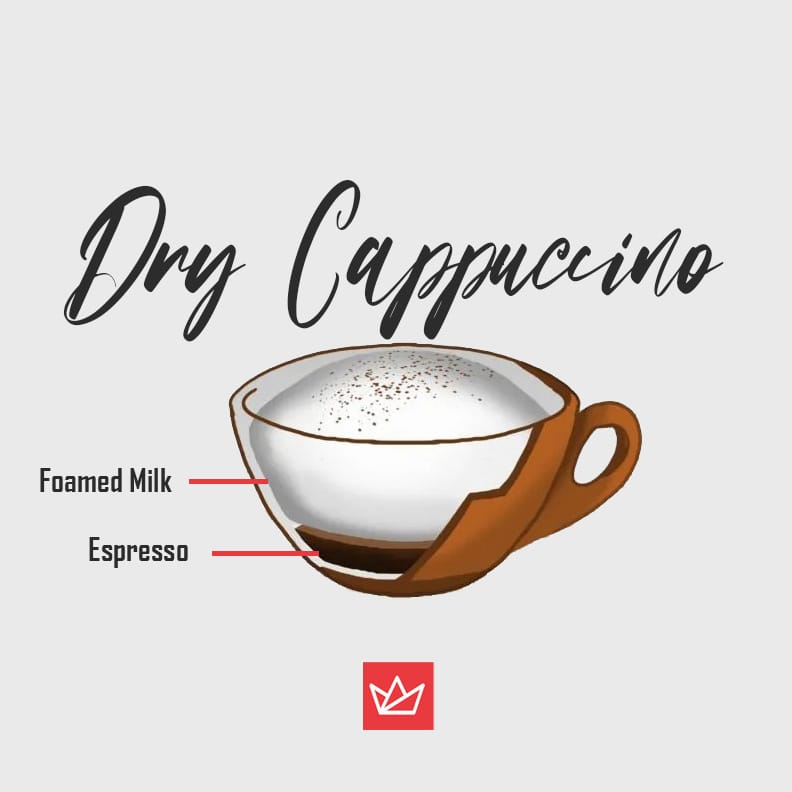
A popular variation of the classic cappuccino.
A dry cappuccino consists of foam without the steamed milk. So instead of the 1:1:1 ratio of the classic cappuccino, the foam to espresso ratio is 2:1.
13. Iced Cappuccino
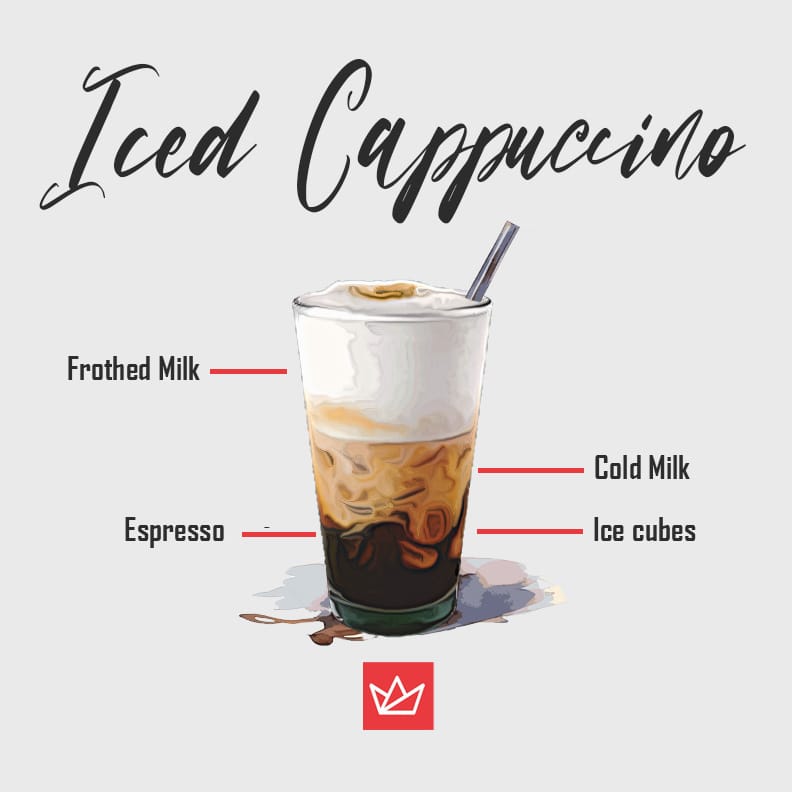
A highly popular espresso with numerous variations. As a basic recipe, it is prepared as follows:
Start with a single or double shot of espresso and pour it over 3-4 ice cubes in a glass (coffee ice cubes are ideal here, as they don’t dilute the taste.).
Add chilled milk and finish with whipped cream or foam.
14. Short Machiatto
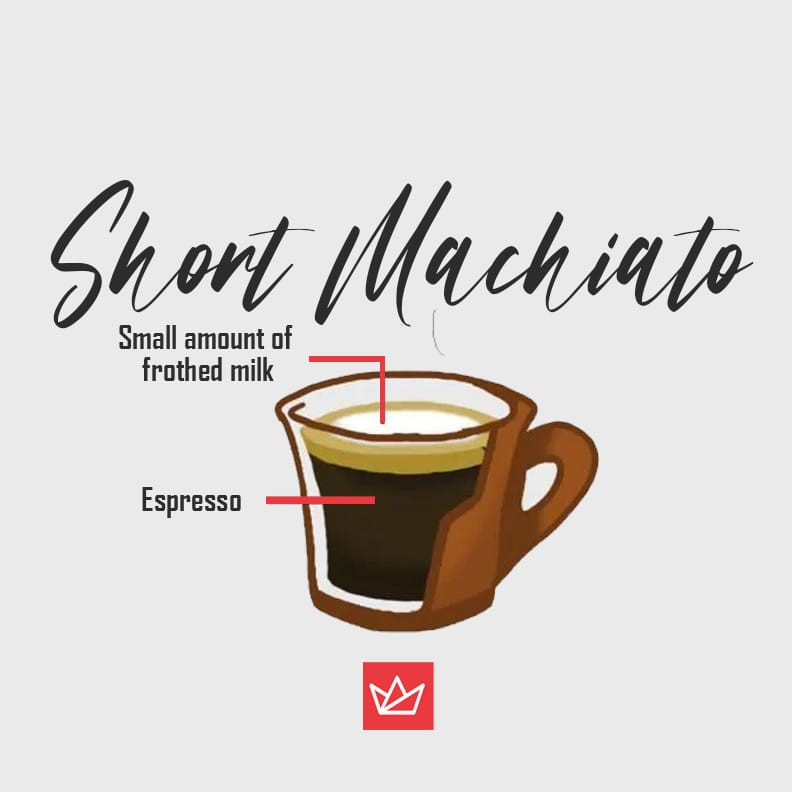
In Italian, “macchiato” means marked-stained.
To prepare a short macchiato, start with a single shot of espresso, and add a minimal amount of frothed milk on top.
This adds a layer of creaminess and sweetness to the espresso shot.
15. Long Machiatto
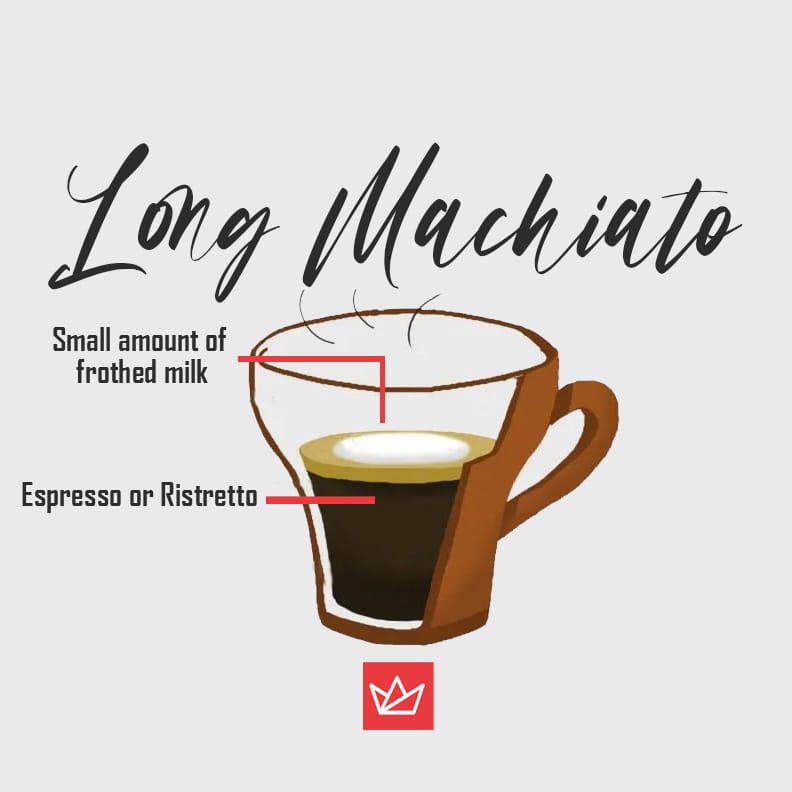
A long machiato is essentially a double espresso with a minimal amount of frothed milk.
Alternatively, a long black can be used, which is a double ristretto shot diluted with hot water at a 1:2 ratio.
16. Latte
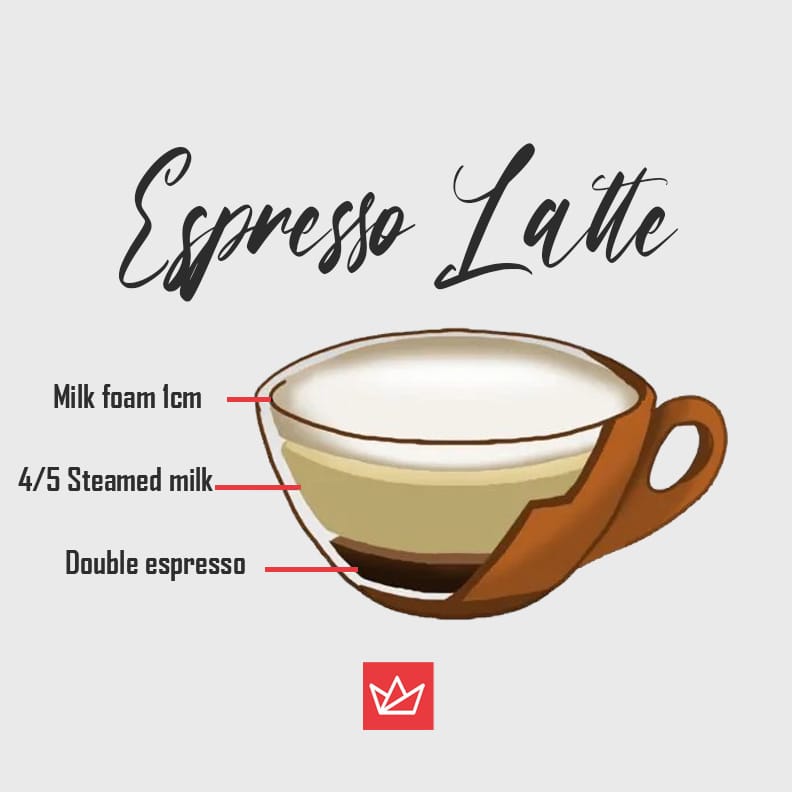
“Latte” in Italian means milk, and that’s an accurate name, considering this popular espresso has a lot of it.
A classic espresso latte is crafted with a double espresso shot and approximately 300ml of lightly steamed milk, featuring a thin layer of foam about 1 centimeter thick. This combination creates the delightful, creamy, and velvety texture characteristic of an espresso latte.
When compared to a flat white, latte has more than double the milk and double the volume.
17. Piccolo Latte
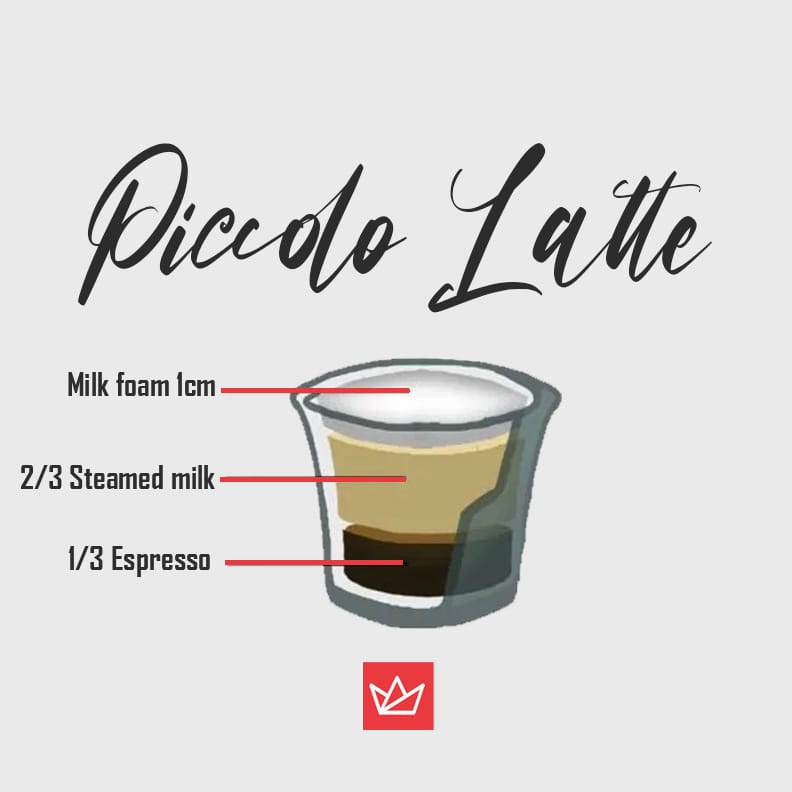
“Picollo” in Italian means small, and that’s all it is – a small latte.
It consists of a single shot of espresso or ristretto, a generous amount of steamed milk, and one centimeter of foam.
18. Iced Latte
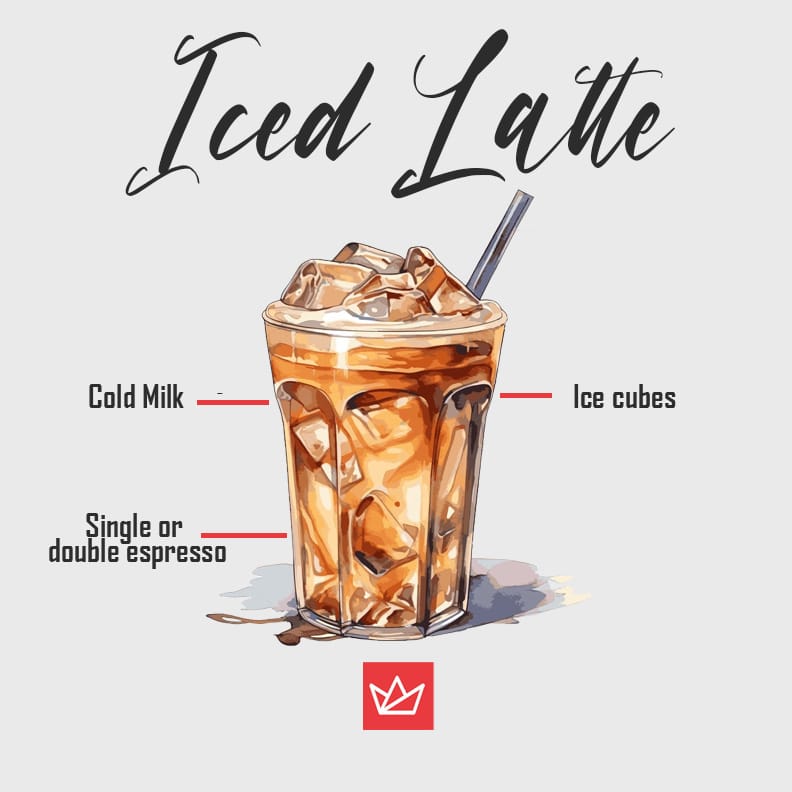
A cold latte offers various options.
For the fundamental recipe, begin by filling half the glass with cold milk, add ice cubes, and finish with a single or double shot of espresso.
You can elevate it with vanilla or caramel syrup and crown it with whipped cream.
19. Flat White
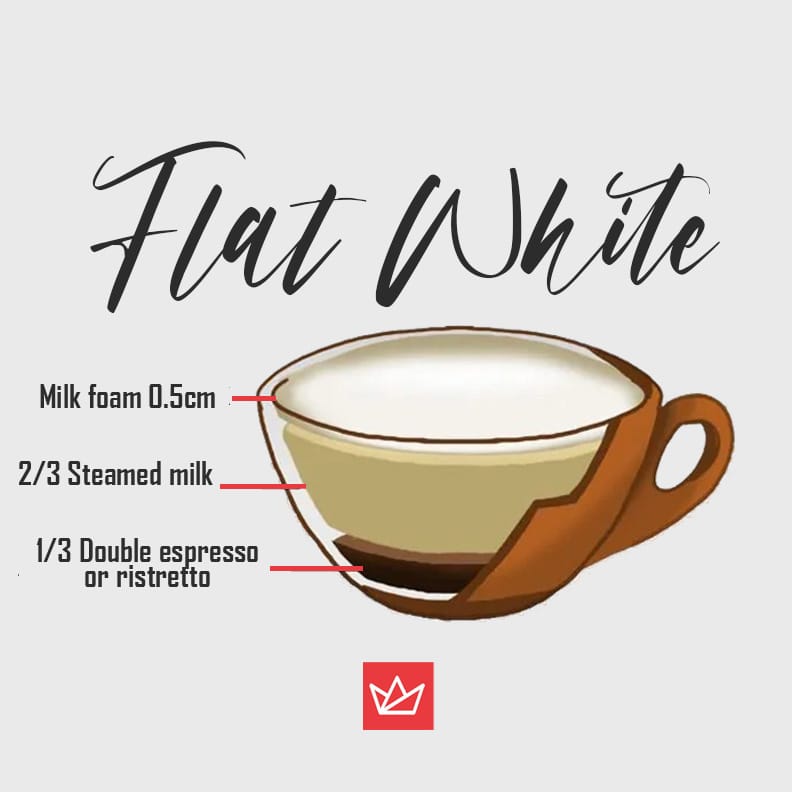
A popular espresso that is also used for latte art.
To make it we start with a double espresso or ristretto, add double the volume of steamed milk (120ml for a double espresso) and a very thin layer of foam 0.5cm.
It is served in a smaller cup, making it a lot stronger than a latte.
20. Cortado
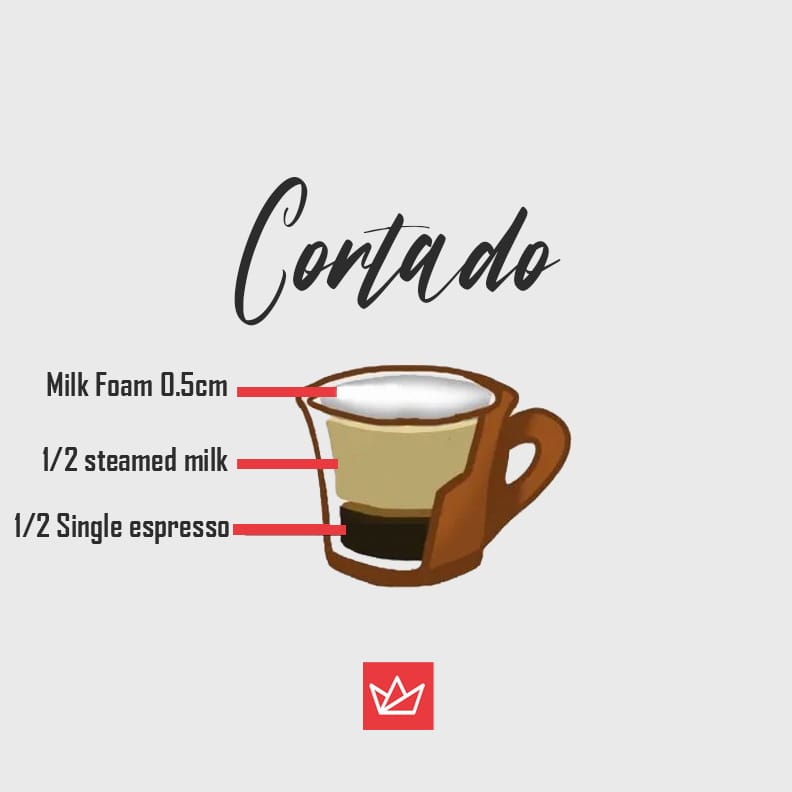
Cortado in Spanish means “cut”, it refers to an espresso that is “cut” with a small amount of warm milk to reduce its acidity.
To make a cortado, you start with an espresso shot and add steamed milk and a very thin layer of foam. The ratio of coffee to steamed milk in a cortado is 1:1.
21. Mocha
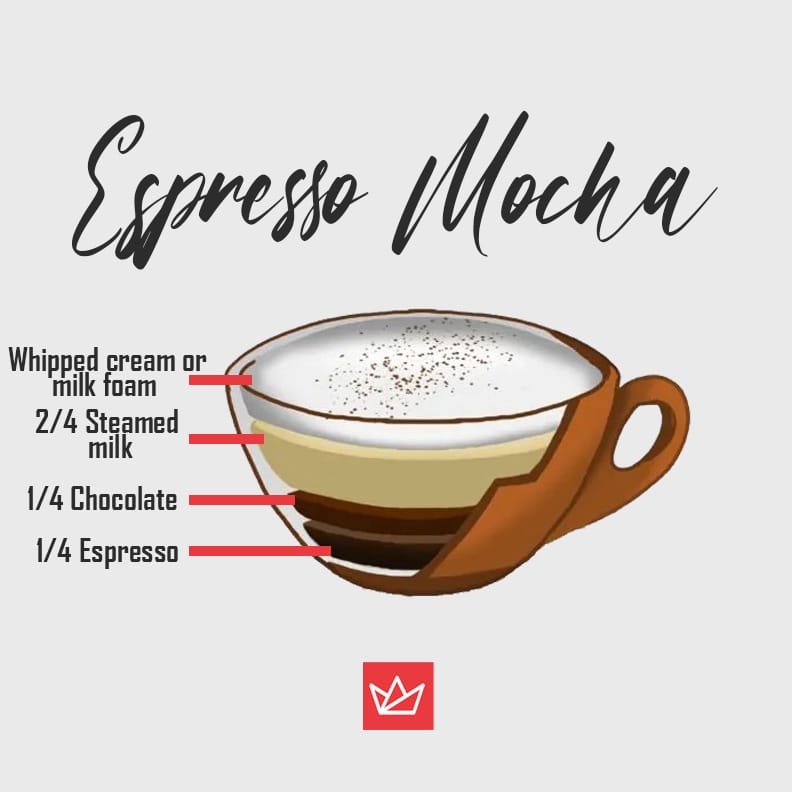
Mocha gets its name from the Yemeni port city of Mocha, renowned for its coffee trade, particularly a bean variation known as ‘mocha’.
This espresso variation is distinguished by its chocolate flavor, achieved through either syrup or powder.
Typically, it features a blend of 1 part espresso, 1 part chocolate, 2 parts steamed milk, topped with a generous layer of whipped cream.
22. Affogato
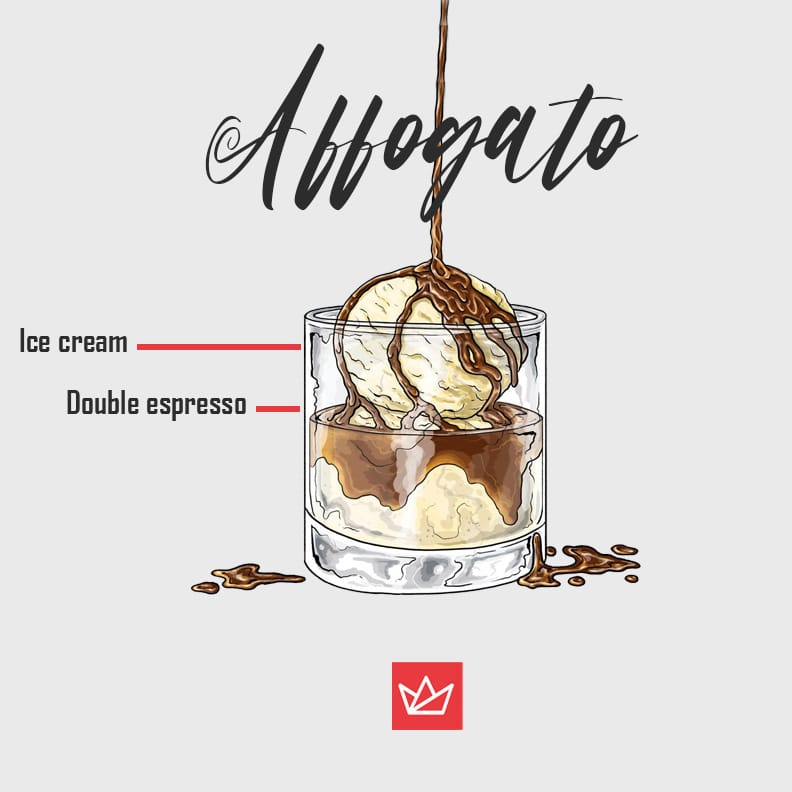
Affogato, meaning ‘drowned’ in Italian, captures the essence of this indulgent treat where delicious ice cream is drowned in an espresso.
To create this espresso dessert, combine a scoop or two of vanilla ice cream in a glass, and pour a double shot of hot espresso.
23. Con Panna
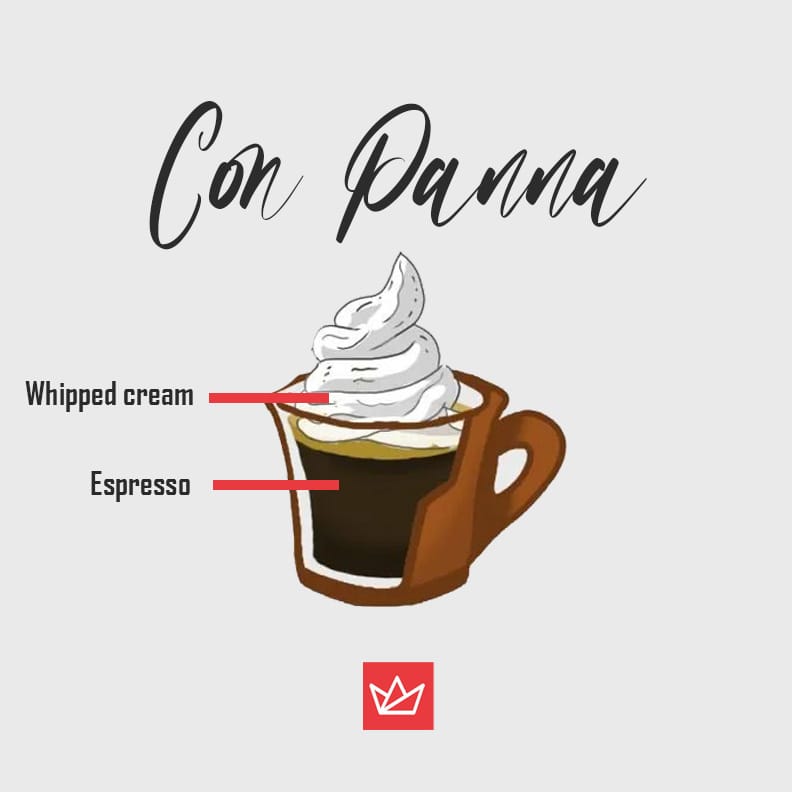
Espresso con panna, means “espresso with cream” in Italian.
To make it, start with a shot of espresso and top it with whipped cream.
24. Vienna
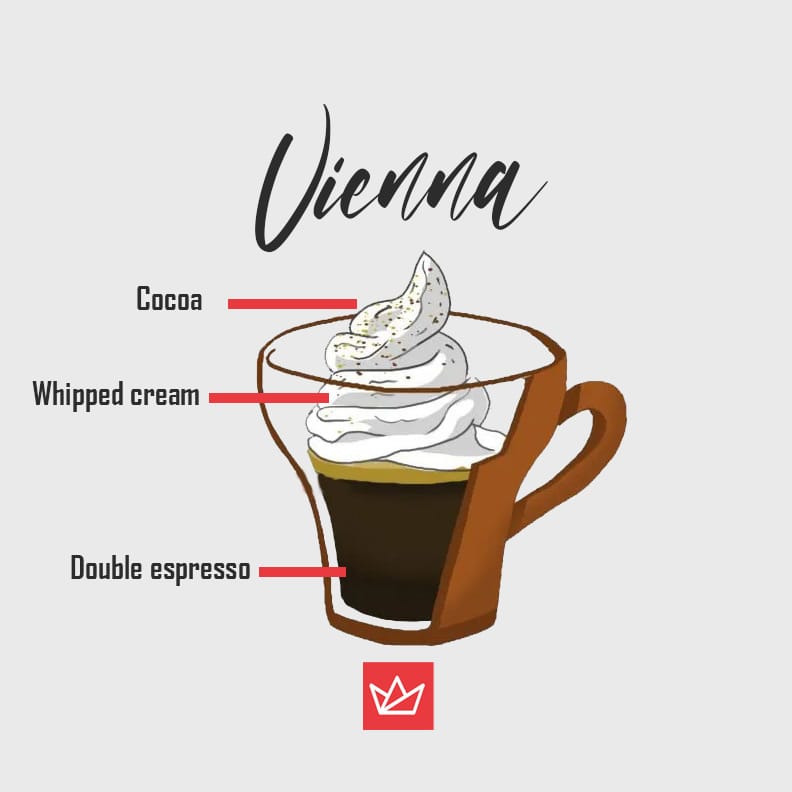
Vienna coffee bears a striking resemblance to Con Panna, with the primary distinction lying in its larger serving size of a double espresso and the addition of various toppings such as chocolate or cinnamon.
ESPRESSO COCKTAIL
25. Irish Coffee
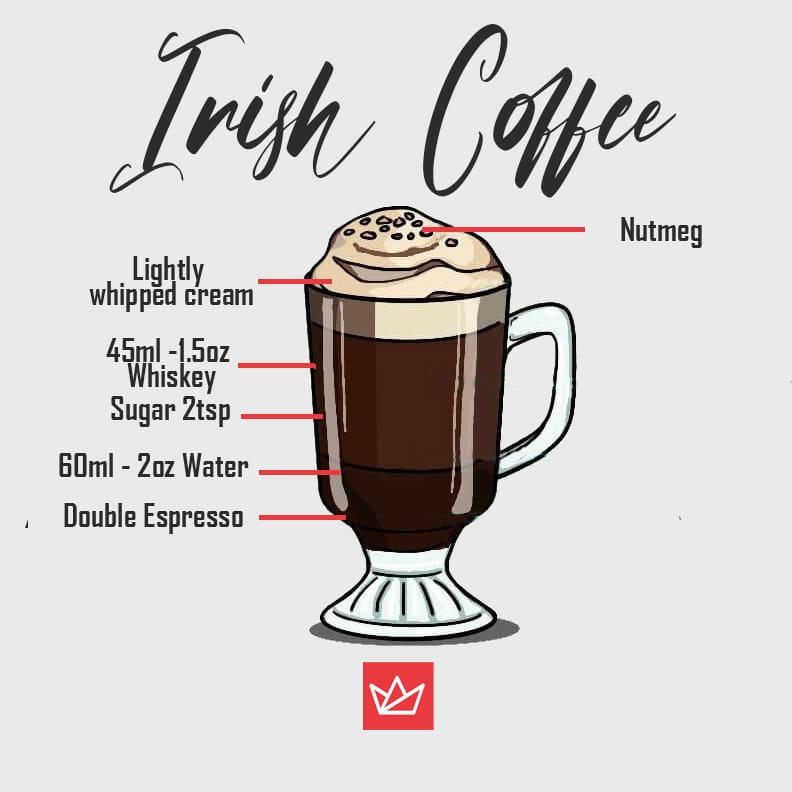
Irish coffee is crafted with strong coffee, whiskey, lightly whipped cream, and sugar.
While the classic recipe calls for filtered coffee, many prefer it with a robust blend of double espresso, diluted with hot water.
26. Correto Espresso
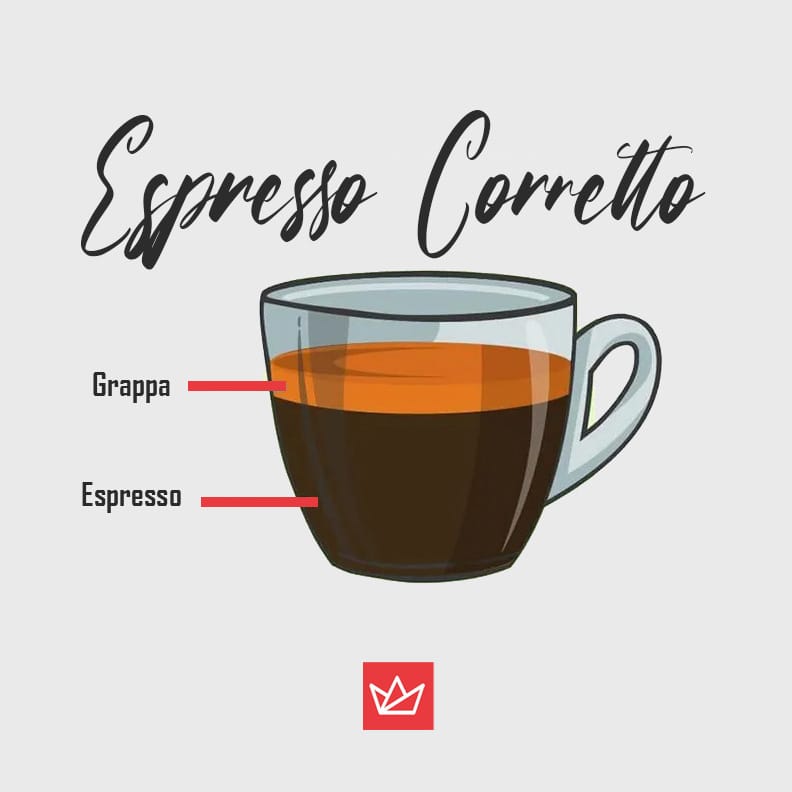
“Correto,” meaning “corrected” in Italian, refers to the practice of amending the bitter taste of coffee with the addition of an alcoholic beverage.
Whether it’s a single or double espresso shot, this concoction is commonly prepared by incorporating a small dose of grappa or another spirit. The beverage should be at room temperature, and the selected spirit is introduced to the coffee before the first sip, ensuring that the alcohol doesn’t evaporate.
While grappa is the traditional choice, brandy and sambuca are also frequently used alternatives. It’s essential, however, to prioritize the prominence of the coffee’s rich taste in the overall experience.
Alexandros Martakis
“As we wrap up our initial exploration into the world of espresso, I want to assure you that there’s much more to discover. Think of this article as a quick snapshot, capturing just a glimpse of what’s ahead.
In the upcoming days, I’ll be expanding our list to include even more espressos. Keep an eye out for the next sections where we’ll dive into the specifics of each espresso type. Over the next few weeks, we’ll be turning this overview into a complete guide, digging into the different espresso varieties and detailed recipes.
Thanks for being part of this journey so far. I’m eager to share more with you soon. Your interest in espresso means a lot, and I can’t wait to provide you with additional insights and recipes for each espresso type. Until then, enjoy your coffee moments!”

